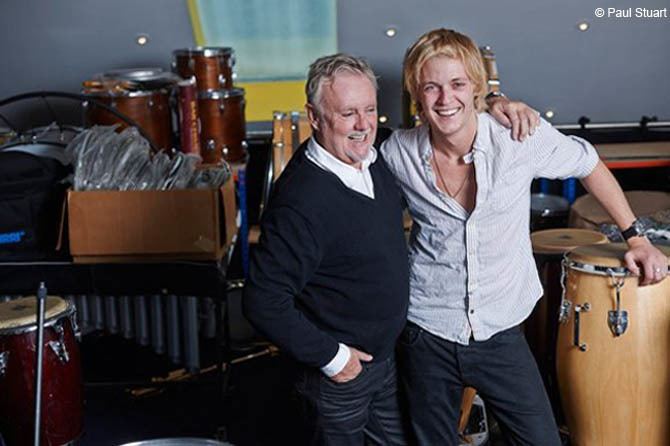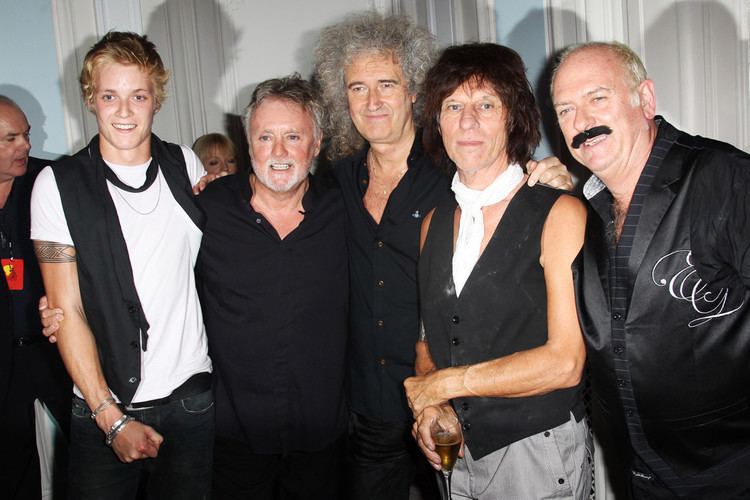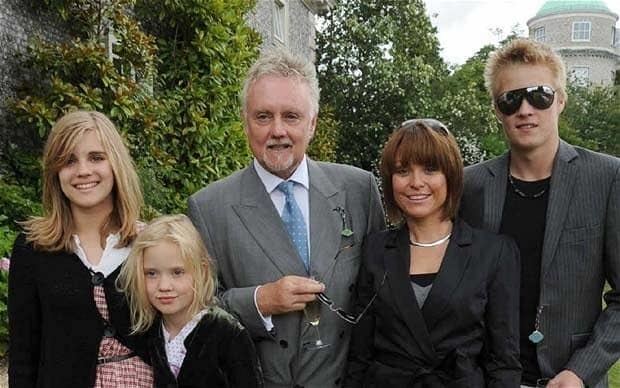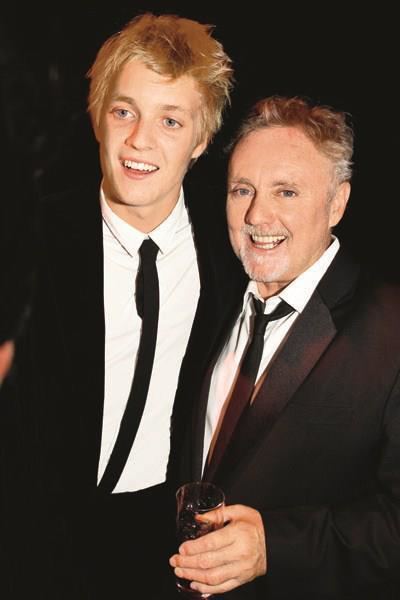Birth name Rufus Lackland Taylor Name Rufus Taylor | Albums Last of Our Kind Died 1978 (aged 67–68) Role Musician | |
 | ||
Siblings Tiger Lilly Taylor, Felix Luther Taylor, Lola Daisy May Taylor, Rory Eleanor Taylor Similar People Roger Taylor, Frankie Poullain, Dan Hawkins, Justin Hawkins, Ed Graham | ||
Music group The Darkness (Since 2015) Parents Debbie Leng, Roger Taylor | ||
Foo Fighters feet. Rufus Taylor on drums — Under Pressure (Queen Cover & David Bowie)
Rufus Lackland Taylor (January 6, 1910 – September 14, 1978) was an officer in the United States Navy. There he became Director of the Office of Naval Intelligence and a Vice Admiral. In 1966 he was appointed as Deputy Director of the Defense Intelligence Agency (DIA), then shortly thereafter as Deputy Director of the CIA, where he served from 1966 to 1969.
Contents
- Foo Fighters feet Rufus Taylor on drums Under Pressure Queen Cover David Bowie
- Queen melbourne 29 august 2014 roger taylor rufus taylor drum battle adam lambert under pressure
- Career
- In the Navy
- At CIA
- Yuri Nosenko
- Sam Adams
- Legacy
- References

Queen melbourne 29 august 2014 roger taylor rufus taylor drum battle adam lambert under pressure
Career

Born in St. Louis, Missouri, Taylor graduated from the United States Naval Academy in 1933. During World War II, he served in the Pacific. For the years 1963 to 1966 he was Director of the Office of Naval Intelligence (ONI). In June 1966, he was made Vice Admiral and Deputy Director of the Defense Intelligence Agency (DIA). That September President Lyndon Baines Johnson appointed him Deputy Director of Central Intelligence at CIA; he was quickly confirmed by the United States Senate. He served at CIA under DCI Richard Helms. Taylor later resigned as DDCI effective February 1969.
In the Navy

Stationed in Japan from 1938 to 1941, he had been sent there by Naval Intelligence to study Japanese. In 1942 he was with an intelligence unit in Corregidor, when the Japanese invaded the Philippines. He was evacuated by motor boat and submarine to Australia. There he joined the staff of the Commander, Allied Naval Forces, Southwest Pacific. In 1943 he was sent to Washington, D.C., to the Office of Naval Intelligence (ONI). In Hawaii, he was with Fleet Radio Unit Pacific (FRUPAC), until the Japanese surrender. He returned to Japan with occupation forces. He then served at sea until 1953. Back in Washington, he was sent to the National Security Agency (NSA). He was then given various assignments in intelligence. In Washington in 1959, he became chief of Pacific Intelligence. In 1963 he was promoted to Director, ONI.

Taylor directed Naval Intelligence until 1966. Among other things, in 1965 he initiated the set up of a secret HUMINT capacity for the Navy. "Despite some concern by senior Navy officers about the 'flap potential', the proposal was approved" by Paul Nitze, the Secretary of the Navy. Established in 1966, the covert unit was designated the Naval Field Operations Support Group (NFOSG) – more commonly known as 'Task Force 157'.
At CIA

The Deputy Director (DDCI) is second in command to the Director of Central Intelligence (DCI). In the absence of the DCI the DDCI assumes the Director's responsibilities. Below are several rulings made by Taylor which addressed high-level disputes within the Agency.
Yuri Nosenko
In late 1967, DCI Richard Helms asked Taylor to oversee a difficult, intra-CIA dispute involving Yuri Nosenko, who defected from Soviet intelligence in 1974. CIA counterintelligence chief James Angleton had almost immediately accused Nosenko of being a double agent and provocateur sent by the Soviets to penetrate American intelligence. As a result of this dilemma Nosenko was held for several years by CIA pending resolution. Taylor conducted his "independent review" of the "immense files" and interviewed the CIA officers involved. He concluded that Nosenko was not a double agent and that Helms should set him free.
Taylor had also relied on an internal CIA report by Bruce Solie of October 1968. Despite strong objections from CIA counterintelligence, eventually Nosenko was released in March 1969, and put on the CIA payroll as a consultant. Angleton, however, kept insisting Nosenko was a counterspy; but in 1974 Angleton resigned from CIA. A further internal CIA report by John Hart in late 1976 confirmed Nosenko's bona fides.
Sam Adams
In May 1968, DCI Helms had appointed a three-man special review board regarding the case of Sam Adams, a mid-level analyst at CIA. The board was chaired by Taylor and included CIA general counsel, Lawrence Houston, and OSS and CIA veteran John Bross, assistant to the DCI. It was "as high level a [board] as could be found within the agency."
Adams in 1966 had challenged the prevailing view of the number of Viet Cong guerrillas, the Order of Battle controversy. The Army's MACV had lower numbers and forcefully asserted its position. The lower numbers were accused of being politically motivated to give the American war effort in a positive light. The conflict between the Army officers in the field and CIA analysts in Washington became a serious concern for the intelligence community. By statute DCI Helms had to arbitrate the dispute. Taking into consideration the prevailing political views of the Johnson Administration, and of the military leaders, in late 1967 Helms finessed it. Adams cried foul at the compromise which favored the lower MACV numbers, and filed a formal complaint against Helms.
By August 1, 1968, the special review board determined that, although Adams' numbers were probably more accurate, his methodology could not provide certainty. While Adams himself had followed correct CIA procedure re his complaint, the CIA also had given him a fair opportunity to present his case. The board recommended another opportunity be granted Adams: a presentation to General Maxwell Taylor chairman of the PFIAB. That November Adams discussed the situation in person with Helms. Never fully reconciled to Helms' policy stance, Adams resigned from the Agency in 1973.
Nota Bene: Adams starts his memoirs by referring to "a letter from Admiral Rufus Taylor, the agency's otherwise kindly deputy director, who intimated that the CIA would be better off without me." As Adams recalls, "The letter was Admiral Taylor's last official act" at CIA, on January 31, 1969. The letter ends suggesting that Adams "submit [his] resignation." Adams instead reflected on troubles at CIA, and "the damnedest set of misdeeds that U.S. Intelligence had ever strung together," e.g., the Order of Battle controversy. "Despite his letter I had no intentions of quitting. Instead I removed from my dest a manilla folder of classified documents... walked past the guard... and drove home." Adams buried these and other documents, afraid they "might vanish" at CIA. They later supported the controversial 1982 CBS documentary The Uncounted Enemy and then were produced for the 1984-1985 trial Westmoreland v. CBS.
Legacy
The Vice Admiral Rufus L. Taylor Award for Leadership.
